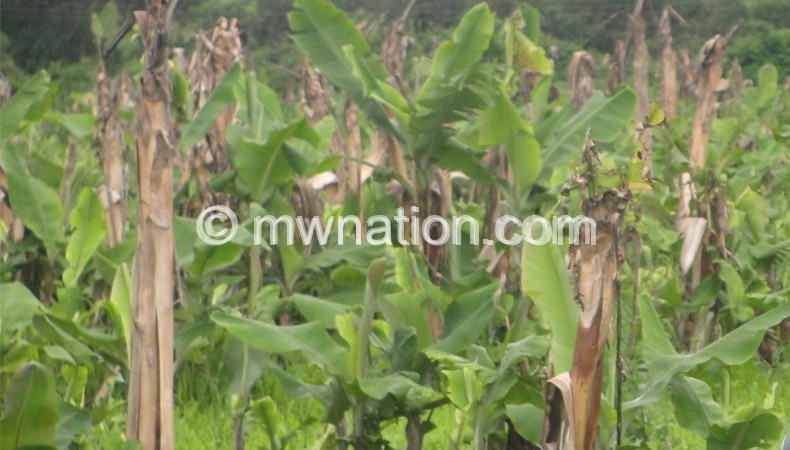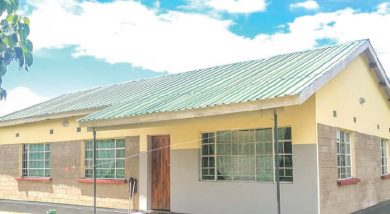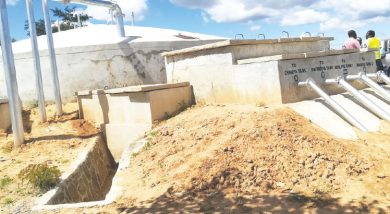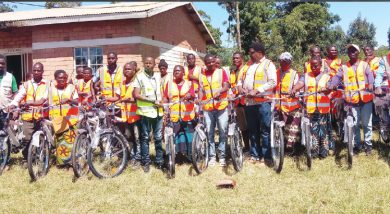By-laws on banana bunchy disease on cards
Resistance from banana farmers to uproot and destroy their tubers due to the crop’s Bunchy Top Disease (BBTD) in Thyolo has forced the agriculture office to engage councillors to develop by-laws that would bring the situation to order.
About 90 percent of the fields have been affected in Thyolo, according to assistant district agricultural development officer (Adado), Noel Mkwapata.

In an interview on Thursday, Mkwapata said the district has been hit hard by the disease such that it now produces 10 to 15 metric tonnes of bananas per hectare from 30 metric tonnes before the disease struck.
“If farmers don’t uproot the tubers, I am afraid we could be facing extinction of the crop which is arguably the district’s main financial source and the people will starve,” said Mkwapata.
He bemoaned lack of understanding on the part of farmers whom he said were ignoring advice to destroy their tubers.
Added Mkwapata: “We had massive campaigns about the issue, but it seems farmers underestimate the implication of not destroying the crop. As a result we have formed a District Agricultural Committee with councillors.
“This committee will come up with by-laws so that whoever continues to resist any measure to contain the disease should be punished. We hope this will help.”
A bunch of bananas that used to sell at K150 ($0.27) is now being sold at K500 ($0.9) in the district, an increase Mkwapata attributed to dwindling production of the crop.
Group Village Head (GVH) Pelusi, under Traditional Authority (T/A) Ngolongoliwa, welcomes the idea of introducing by-laws to deal with the situation.
But Pelusi urged council authorities to provide alternative means of financial resources that could replace bananas.
In a separate interview on Friday, Thyolo crops officer Frebson Banda said banana yields have been dropping since the 2010-2011 farming season due to the disease.
“From 20697 hactares of land in the 2010-2011 season, 85,488 metric tonnes were realised; the 2011-2012 season had 18,782 hactares and we got 686,436 metric tonnes; we got 462,904 metric tonnes from the 2012-2013 season,” he said.
“The figure went down further such that in the 2013-2014 season, the district got 323,978 from 13205 hactares of land and in the 2014-2015 season its gone further down to 191,973 metric tonnes from 10338 hactares of land,” added Banda.
About 46 000 hectares of banana fields have been affected across the country. Earlier this month, Secretary for Agriculture Erica Maganga told The Nation that Treasury had approved funding to combat the disease.
BBTD was first noted in Malawi around Thiwi area in Nkhotakota in 1994 but confirmed in 1997. Since then, the disease has spread nationwide, except Chitipa and Karonga districts and has wiped out 95 percent of Cavendish (Williams/Mulanje varieties) across the country.
The banana bunchy top virus is spread by the banana aphid, which acquires the virus after at least four hours of feeding on an infected plant. The aphid can retain the virus through its adult life, for a period of 15–20 days.





